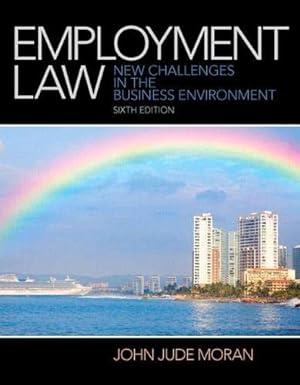Question
359 Mass. 319 (1971)268 N.E.2d 860 MARIUS S. COBLYN vs. KENNEDY'S, INC. & another. Supreme Judicial Court of Massachusetts, Suffolk. March 4, 1971.April 15, 1971.
359 Mass. 319 (1971)268 N.E.2d 860
MARIUS S. COBLYN
vs.
KENNEDY'S, INC. & another.
Supreme Judicial Court of Massachusetts, Suffolk.
March 4, 1971.April 15, 1971.
Present: TAURO, C.J., SPALDING, SPIEGEL, REARDON, & BRAUCHER, JJ.
Thomas R. Morse, Jr., for the defendants.
Sumner Z. Kaplan (Julian Soshnick with him) for the plaintiff.
*320 SPIEGEL, J.
This is an action of tort for false imprisonment.[1] At the close of the evidence the defendants filed a motion for directed verdicts which was denied. The jury returned verdicts for the plaintiff in the sum of $12,500. The case is here on the defendants' exceptions to the denial of their motion and to the refusal of the trial judge to give certain requested instructions to the jury.
We state the pertinent evidence most favorable to the plaintiff. On March 5, 1965, the plaintiff went to Kennedy's, Inc. (Kennedy's), a store in Boston. He was seventy years of age and about five feet four inches in height. He was wearing a woolen shirt, which was "open at the neck," a topcoat and a hat. "[A]round his neck" he wore an ascot which he had "purchased ... previously at Filenes." He proceeded to the second floor of Kennedy's to purchase a sport coat. He removed his hat, topcoat and ascot, putting the ascot in his pocket. After purchasing a sport coat and leaving it for alterations, he put on his hat and coat and walked downstairs. Just prior to exiting through the outside door of the store, he stopped, took the ascot out of his pocket, put it around his neck, and knotted it. The knot was visible "above the lapels of his shirt." The only stop that the plaintiff made on the first floor was immediately in front of the exit in order to put on his ascot.
Just as the plaintiff stepped out of the door, the defendant Goss, an employee, "loomed up" in front of him with his hand up and said: "Stop. Where did you get that scarf?" The plaintiff responded, "[W]hy?" Goss firmly grasped the plaintiff's arm and said: "[Y]ou better go back and see the manager." Another employee was standing next to him. Eight or ten other people were standing around and were staring at the plaintiff. The plaintiff then said, "Yes, I'll go back in the store" and proceeded to do so. As he and Goss went upstairs to the second floor, *321 the plaintiff paused twice because of chest and back pains. After reaching the second floor, the salesman from whom he had purchased the coat recognized him and asked what the trouble was. The plaintiff then asked: "[W]hy `these two gentlemen stop me?'" The salesman confirmed that the plaintiff had purchased a sport coat and that the ascot belonged to him.
The salesman became alarmed by the plaintiff's appearance and the store nurse was called. She brought the plaintiff into the nurse's room and gave him a soda mint tablet. As a direct result of the emotional upset caused by the incident, the plaintiff was hospitalized and treated for a "myocardial infarct."
Initially, the defendants contend that as a matter of law the plaintiff was not falsely imprisoned. They argue that no unlawful restraint was imposed by either force or threat upon the plaintiff's freedom of movement. Wax v. McGrath, 255 Mass. 340, 342. However, "[t]he law is well settled that `[a]ny general restraint is sufficient to constitute an imprisonment ...' and `[a]ny demonstration of physical power which, to all appearances, can be avoided only by submission, operates as effectually to constitute an imprisonment, if submitted to, as if any amount of force had been exercised.' `If a man is restrained of his personal liberty by fear of a personal difficulty, that amounts to a false imprisonment' within the legal meaning of such term." Jacques v. Childs Dining Hall Co. 244 Mass. 438, 438-439.
We think it is clear that there was sufficient evidence of unlawful restraint to submit this question to the jury. Just as the plaintiff had stepped out of the door of the store, the defendant Goss stopped him, firmly grasped his arm and told him that he had "better go back and see the manager." There was another employee at his side. The plaintiff was an elderly man and there were other people standing around staring at him. Considering the plaintiff's age and his heart condition, it is hardly to be expected that with one employee in front of him firmly grasping *322 his arm and another at his side the plaintiff could do other than comply with Goss's "request" that he go back and see the manager. The physical restraint imposed upon the plaintiff when Goss grasped the plaintiff's arm readily distinguishes this case from Sweeney v. F.W. Woolworth Co. 247 Mass
Step by Step Solution
There are 3 Steps involved in it
Step: 1

Get Instant Access to Expert-Tailored Solutions
See step-by-step solutions with expert insights and AI powered tools for academic success
Step: 2

Step: 3

Ace Your Homework with AI
Get the answers you need in no time with our AI-driven, step-by-step assistance
Get Started


